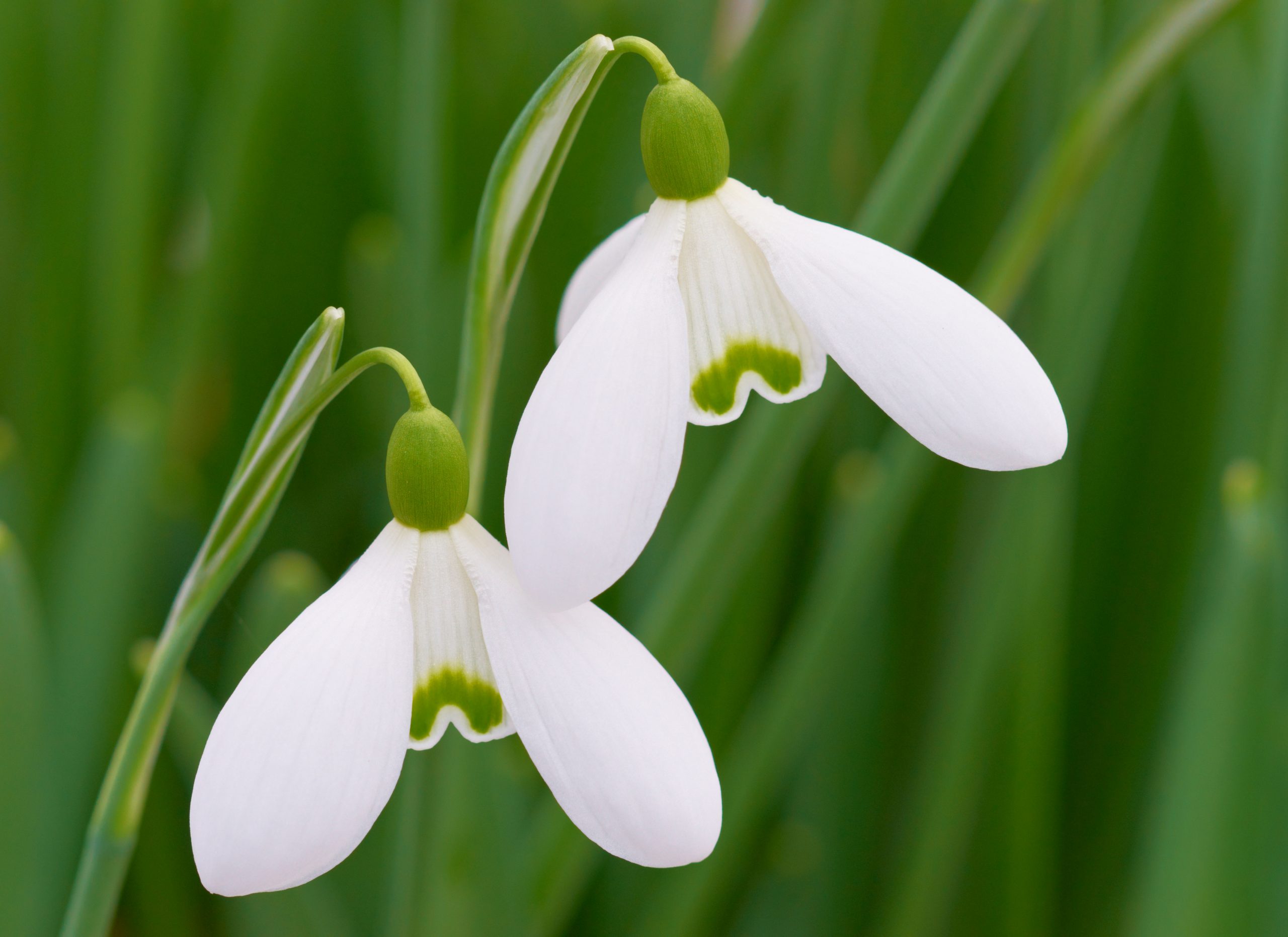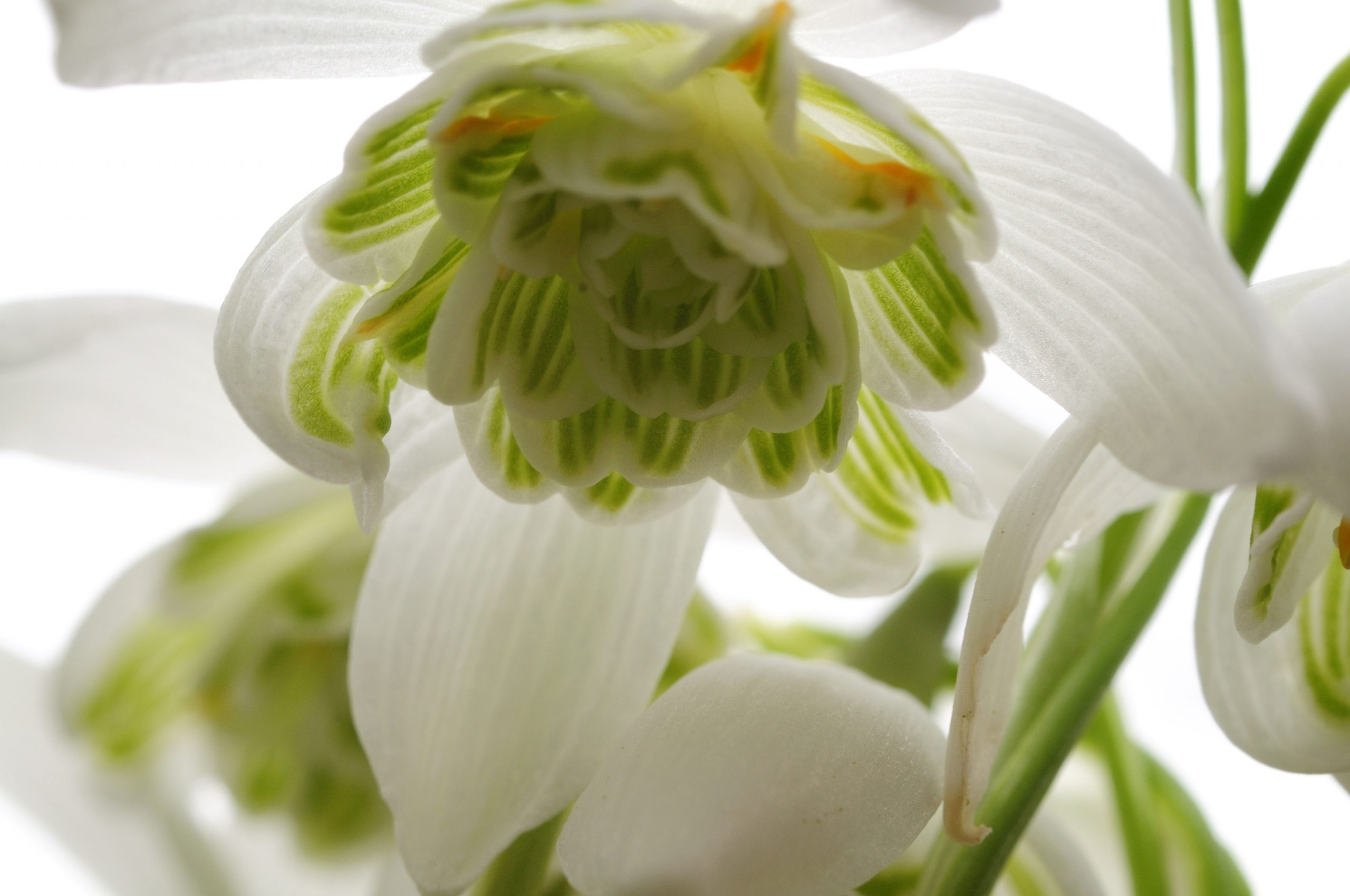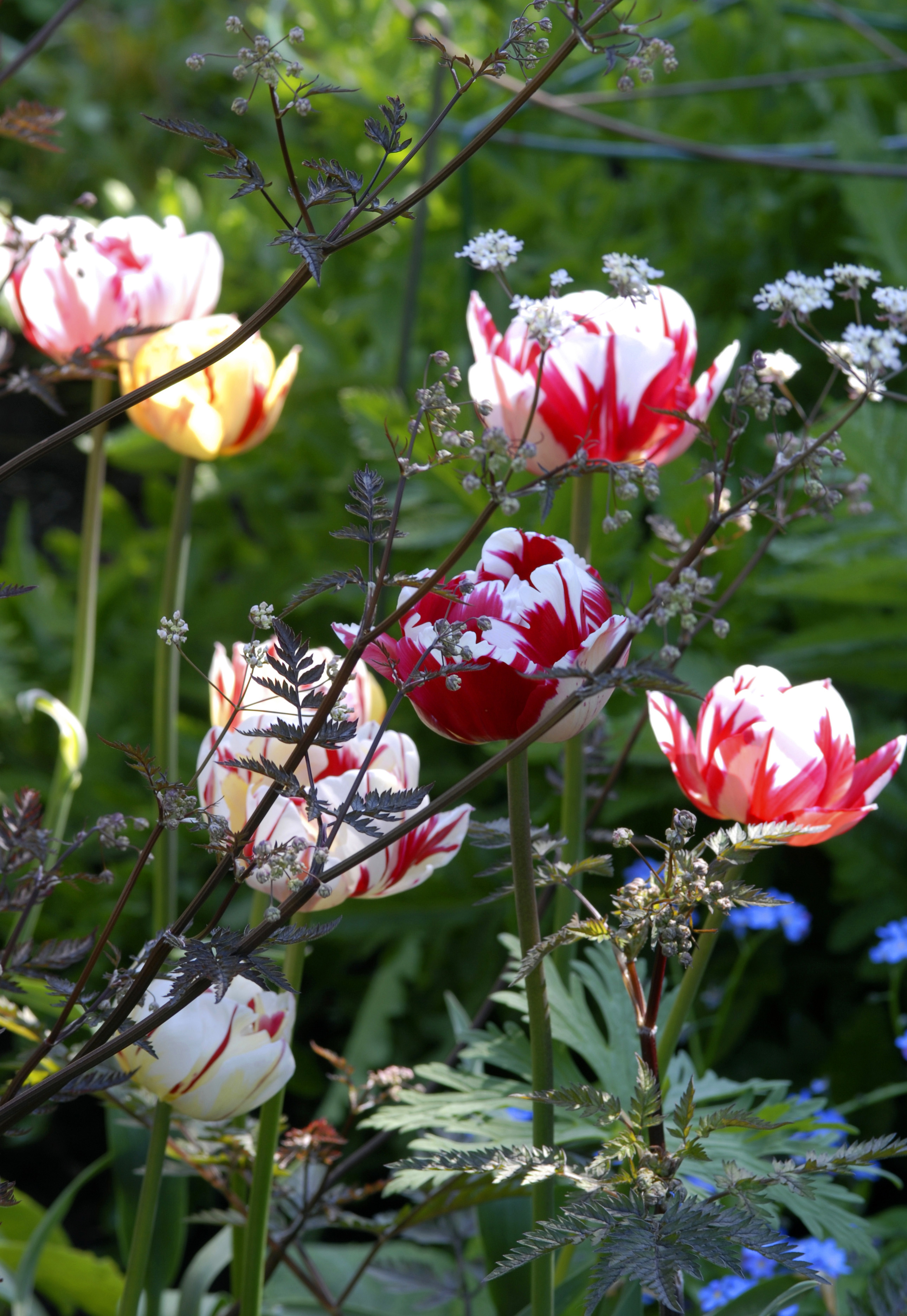Curious Questions: Should you bring a snowdrop into the house?
Martin Fone delves into Britain's collective passion for Galanthus and looks at the folklore that surrounds it.


Positioned almost at the midway point of the astronomical winter, Candlemas, the Christian festival celebrated on February 2nd, forty days after Jesus’ birth, is an ideal moment to take stock. In weather lore, it was regarded as a harbinger of what was to come, the hibernal equivalent of St Swithin’s Day. ‘If Candlemas Day be fair and bright’ ran one proverb, ‘winter will take another flight. If Candlemas Day be foul and rain, winter is gone and won’t come again.’
By Candlemas, the snowdrop should have made its presence known, its erect stem having pushed its way through the soil to brave the cold and delight us with its pendulous white bell-shaped flowers. Not for nothing is it known as the Candlemas Bell or Fair Maid of February or Snow Lily, the translation of its Welsh name, Eirlys. In his Perennial Calendar and Companion to the Almanac (1824), Dr Thomas Forster marked its arrival with a self-conscious piece of archaic doggerel: ‘The snowdrop, in purest white arraie,/ first rears her hedde on Candlemas daie,/ while the Crocus hastens to the shrine/ of Primrose lone on St Valentine’.
Forster was using poetic licence as the snowdrop can, and often does, appear as early as January, especially during a mild winter, a characteristic noted by John Gerard in his description of the plant in his Herball (1597), the first detailed account of the plant in a British text. His description of what he called ‘Timely Flowering Bulbous Violets’ is unmistakably that of a snowdrop. ‘The whole flower hangeth down his head by reason on the on the weak foote stalk whereon it groweth. The root is small white and bulbous. [It] flowereth at the beginning of Januarie.’
Snowdrops were not indigenous to Britain, having possibly been introduced to this country by Italian monks in the 15th century or as early as the Roman occupation. By Gerard’s time, snowdrops were well established as garden plants, ‘maintained and cherished…for the beauty and rareness of the flowers, and sweetness of their smell’, so much so that he had to remind his readers that they were not a native species; ‘these plants do grow wild in Italie and places adjacent, notwithstanding our London gardens have taken possession of them all, many years past’.

Writing half a century later, John Parkinson, whose snowdrops had been imported from Constantinople, was more pessimistic as to when they would flower, suggesting February, if the weather was mild, or else the beginning of March. He too referred to them as bulbous violets.
Snowdrops did escape from the confines of the garden into the wild, often found adjacent to gardens or other plants of garden origin, but it was not until 1778 that the first wild snowdrop was recorded in Britain.
Originally, they were associated with the Leucojum genus, given their passing similarity to the snowflake, despite the latter being larger, having more than one flower per stem, and green spots on the end of their petals. Carl Linnaeus, in 1753, put an end to the confusion, giving the snowdrop its own botanical name, Galanthus nivalis, a mix of Latin and Greek meaning ‘milkflower of the snow’. That was not the end of the snowdrop’s taxonomical identity crisis, only resolved for good in 1805 when Jean Henri Saint-Hilaire placed it in the Amaryllidaceae family.
Exquisite houses, the beauty of Nature, and how to get the most from your life, straight to your inbox.
In Germany, there is a charming tale set at the dawn of time to explain the early arrival of the snowdrop, often when snow is on the ground and conditions deter other bulbs from showing their heads. The snow, desperately seeking a colour to call its own, was snubbed by the more colourful plants not wishing to be associated with something so cold and unpleasant. Taking pity on it, the snowdrop allowed it to adopt its colour, white. In gratitude, the snow protected it from the rigours of the cold and frost, a symbiotic relationship that has existed ever since.
According to the Scottish poet, George Wilson, in his poem, The Origin of the Snowdrop, published posthumously in 1860, the snowdrop was created after Adam and Eve were expelled from the Garden of Eden into the frozen wastes. Pitying their plight, an angel scooped up some snowflakes, and breathed on them, transforming the ice into soft, pearly flowers — the first snowdrops. ‘And thus’, he wrote, ‘the snowdrop, like the bow/ that spans the cloudy sky,/ became a symbol whence we know/ that brighter days are nigh.’
From the mid-19th century, interest in snowdrops took off, with horticulturalists discovering new types and cross-pollinating existing varieties to the extent that today there are between 1,500 and 2,500 varietals spread across twenty species. Most originate from just three species, Galanthus nivalis, Galanthus elwesii, and Galanthus plicatus. Prices can reach eye-watering levels. In 2014, the naming rights to a snowdrop varietal, together with a bulb, were sold for £2,500 and, in 2015, a ‘Golden Fleece’ snowdrop sold on eBay for £1,390, plus £4 postage.

Galanthophiles were heartened when the Snowdrop Festival at the Garden House, in the Devon village of Buckland Monachorum, opened its doors to visitors on January 14, after a year off due to Covid restrictions. The mild winter has allowed it to display some 350 varietals and it runs until February 27.
The Victorians planted snowdrops in the shady areas of churchyards, particularly on the graves of loved ones. In some parts of the country, this led to the flower being associated with death, especially as the flower’s head looked like a corpse in a shroud. The Encyclopaedia of Superstitions, Folklore and the Occult Sciences of the World (1903) noted that ‘they are so much like a corpse in a shroud that the people…will not have them in the house, lest they bring in death’. Failure to heed the warning meant that a death would occur within twelve months. A single bloom in a vase made it even more likely.
If that was not enough, snowdrops in the house would, according to The Handbook of Folklore (1913), ‘make the cows’ milk watery and affect the colour of the butter’ or reduce the number of eggs that a sitting hen would hatch. Far better to wear one or eat it. ‘The snowdrop will ensure purity of thought to the wearer’, the Encyclopaedia told its readers, while ‘if a girl eats the first snowdrop she finds in the spring, she will not get tanned in the summer’.
In Shropshire and Herefordshire, however, people took a contrary view, carrying snowdrops into the house as part of a purification ritual, defying the gloomy prognostication that it ‘was unlucky to decorate your rooms with snowdrops’. Others saw it as a symbol of health and wellbeing - its bulb contains the alkaloid galantomine, used for the management of Alzheimer’s - and its white tepals as a representation of the wintry sun gaining strength as the days lengthen.
Like George Wilson, I regard them as a symbol of hope, a sign that the earth is stirring, and that winter will soon be gone. Taking no chances, however, I will keep mine in the ground.

Curious Questions: What caused Tulipmania?

Credit: Alamy
Curious Questions: What is a weed?
They're the bane of gardeners' lives, but do they even exist, at least in any consistent and logical sense? Martin Fone
After graduating in Classics from Trinity College Cambridge and a 38 year career in the financial services sector in the City of London, Martin Fone started blogging and writing on a freelance basis as he slipped into retirement. He has developed a fearless passion for investigating the quirks and oddities of life and discovering the answers to questions most of us never even think to ask. A voracious reader, a keen but distinctly amateur gardener, and a gin enthusiast, Martin lives with his wife in Surrey. He has written five books, the latest of which is More Curious Questions.
